Chapter 1, Part 4
In the time when the Buddhist Mauryan Dynasty dominated much of South Asia, the southern part of India experienced a period of time when Tamil literature and art flourished, known as the Sangam period. At the time, the main powers of the region – the Cheras, Pandyas, and Cholas – were fighting for supremacy, waging wars among themselves as well as pursuing artistic achievements. However they remained largely peaceful to their northern superpower neighbor, sparing them from the same fate that brought the state of Kalinga to its demise.
This golden age of Tamil culture gradually ended following the fall of the three kingdoms due to the attacks from the Kalabhras in the third century AD. The conquerors’ rule lasted until the sixth century, but little is known about them, although a remark from a book published by the Archaeological Survey of India (ASI) states that Kalabhra’s rule was rather ‘chaotic’. However during this less-celebrated period in Indian history a South Indian family emerged around the third to fourth centuries who, generations later, would overthrow the Kalabhras and establish a powerful dynasty: the Pallavas.
Initially they were feudatories of the Satavahanas in the Deccan region. But as the Satavahanas gradually lost their power, the Pallavas rose to prominence and together with the Pandyans they eventually defeated the Kalabhras in the mid-sixth century. The first Pallavan king, Simhavarma II, ascended the throne and started a dynasty that would last for more than three centuries.
History kept repeating itself. Like the enmities among the Cheras, Pandyas, and Cholas hundreds of years earlier, the Pallavas and their contemporaries – the (resurgent) Pandyas and Chalukyas – not only fought against each other for regional supremacy, but also engaged in perennial attempts to outdo each other in artistic accomplishments, notably in architecture.
King Mahendravarman I initiated the rock-cutting method to build temples, avoiding the same mistake early Tamil kings did by constructing shrines with materials that would not endure, like timber and metal. During his reign a multitude of rock-cut cave temples (also called mandapas) were built throughout Mahabalipuram. His son, Narasimhavarman I, continued this tradition as well as developed another method of temple building.
Free-standing monoliths were constructed in the seventh century, each was meticulously and laboriously carved from a single rock. The most famous group of such structure, as well as the earliest of its kind in India, is Pancha Rathas, ‘Five Chariots’, which are associated with the Pandavas of the Indian epic Mahabharata. Draupadi Ratha, after the wife of the Pandavas, which contains the image of Durga, is arguably the most elegant of all. In front of it stands a lion statue, Durga’s mount. Next to it is Arjuna Ratha, after the third of the Pandavas, adorned with sculptures of Shiva, Indra and Vishnu with their respective mounts. Behind it a giant Nandi statue was left unfinished.
Unfinished is in fact the state of construction of the other rathas. Bhima Ratha, with its elongated rectangular shape, was believed to be built to contain a statue of reclining Vishnu. Dharmaraja (Yudhistira) Ratha, the biggest of the group, has similar architectural style with Arjuna Ratha but with an unfinished lower part. Nakula Sahadeva Ratha, after the twins and youngest of the Pandavas, sits next to an elephant monolith. They were all never consecrated, hence the name ratha instead of temple.
Another artistic achievement during Narasimhavarman’s rule was the Arjuna’s Penance, depicting scenes from the story of the descent of Ganga (the Ganges) from heaven to earth. Dubbed as the world’s largest open-air bas relief, it is a fine example of creativity born from human adaptation to nature. Images of Naga and Nagi serpents were carved on the natural cleft between the two panels of the rock, symbolizing river-dwelling creatures.
Narasimhavarman’s death and a period of relative instability due to the threat posed by the Chalukyas put the construction of the rathas to a halt. Only more than three decades later during the reign of King Narasimhavarman II did the constructions resume. However the new king, understanding that cutting rock to build temples is a time-consuming process, introduced a new and faster method.
He began the golden age of South Indian masonry marked by the construction of so-called structural temples, including the ones scattered along the Coromandel coast. European explorers gave the nickname ‘Seven Pagodas’ to the temples they saw from their ships, a convenient way to describe the landmark to subsequent sailors. Today the Shore Temple, however, is the sole survivor for the rest of the ‘pagodas’ had succumbed to the forces of nature a long time ago. It was not until 2004 when the Indian Ocean tsunami hit this part of the world that the foundations of the long lost temples were sighted again after centuries of obscurity.
Nevertheless the sole survivor’s condition is by no means immaculate as exposure to the sea wind for more than a millennium has been damaging its sculptures and reliefs. Madhu, who took us to Mahabalipuram, wondered if the Shore Temple would last another century. Preservation efforts have been taken, however, to protect the UNESCO World Heritage Site from further damage.
Temple-building aside, the Pallavas, as well as other South Indian peoples, were known for their seafaring activities. One of the regions they reached was the islands what today constitute the western part of Indonesia, although it is still unknown when and where they arrived for the first time. The evidence of these early contacts became clear when a yupa (stone with inscriptions) found in East Kalimantan (one of the five provinces on the Indonesian side of Borneo) and written in Pallava script revealed the existence of a fourth-century Hindu kingdom in the region. Kutai, also called Kutai Martadipura, is to date one the oldest kingdoms in Indonesian history.
Not only in Indonesia, the influence of the Pallavas was also palpable in many parts of Southeast Asia. The Javanese, Balinese, Kawi, Burmese, Khmer, Thai, Lao and some other scripts used in the region are believed to be, whether directly or indirectly, derived from the Pallava script. Some scholars also believe that the architectural style of early Hindu temples in Java was influenced by that of the Pallava’s, chiefly the structural temples. The increasing cultural exchanges between Javanese kings and the Pallavas would soon mark the beginning of a chapter in history known as the Javanese classical period.
Click here for the full list of stories from the Spice Odyssey series.
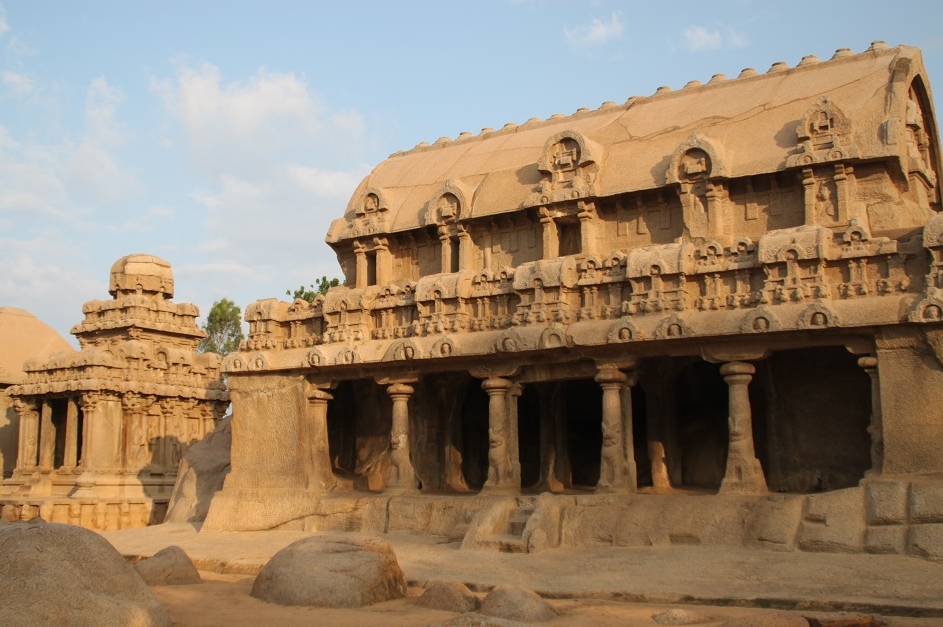

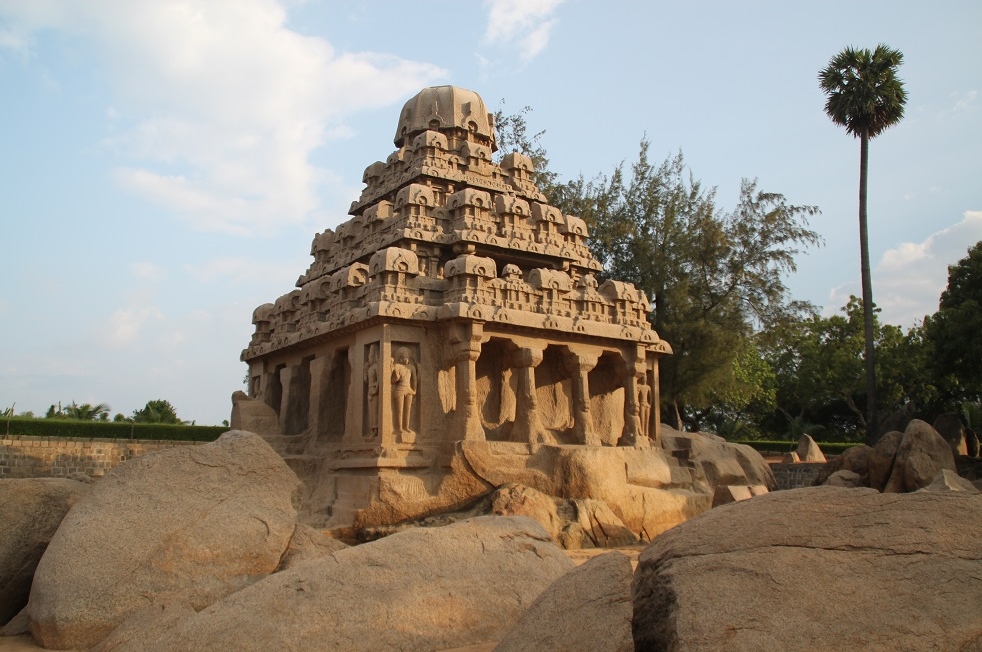
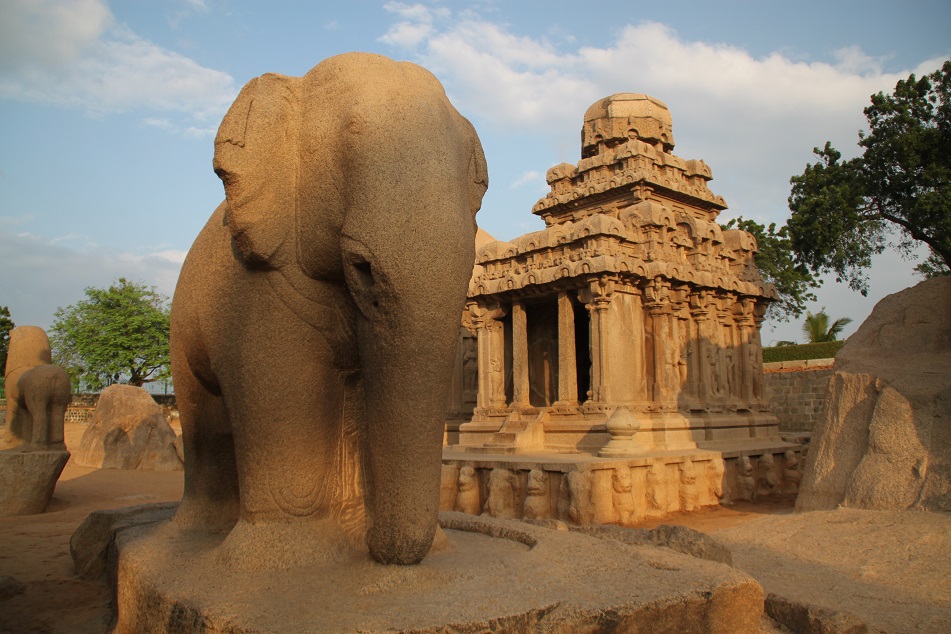
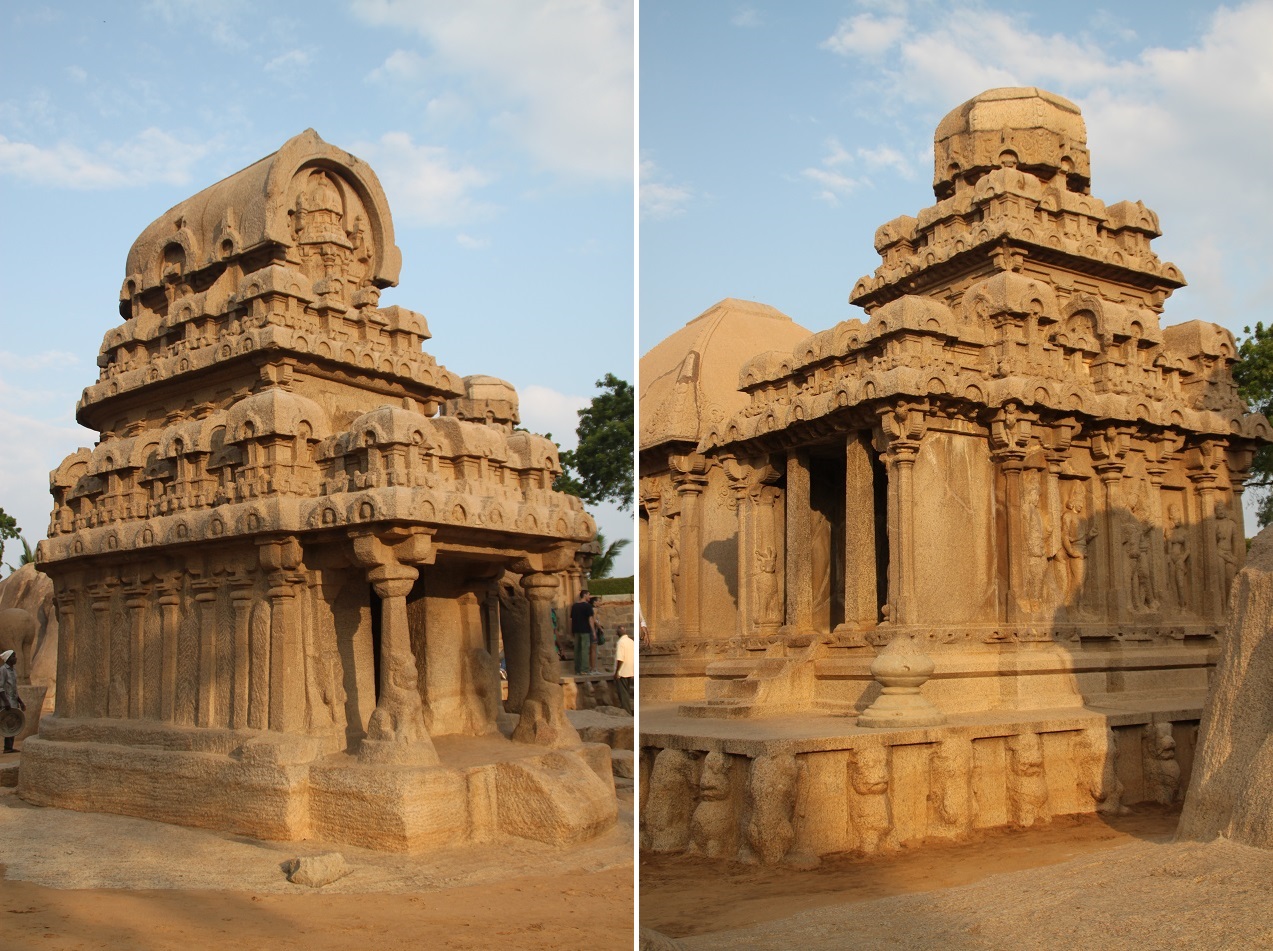
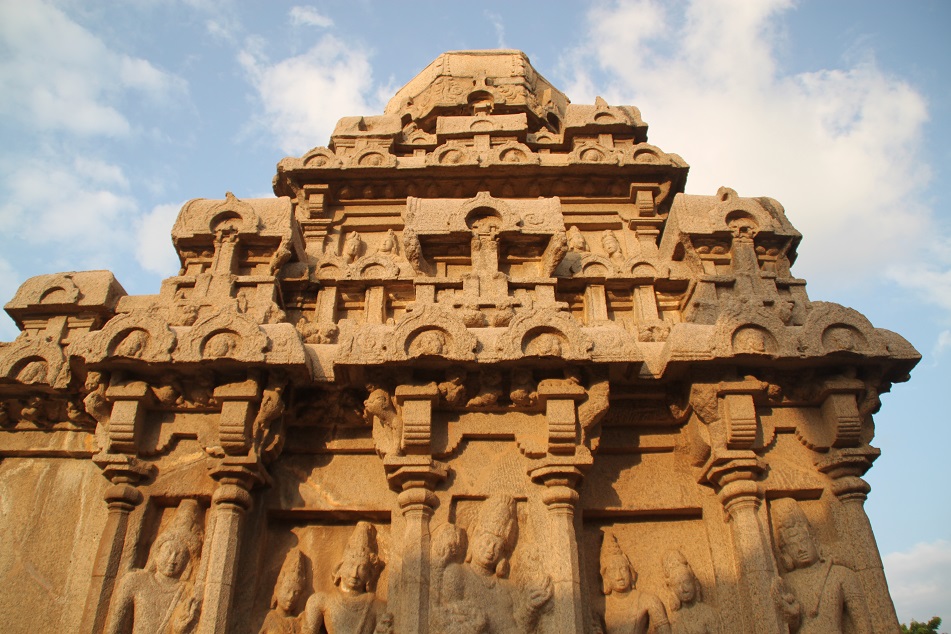
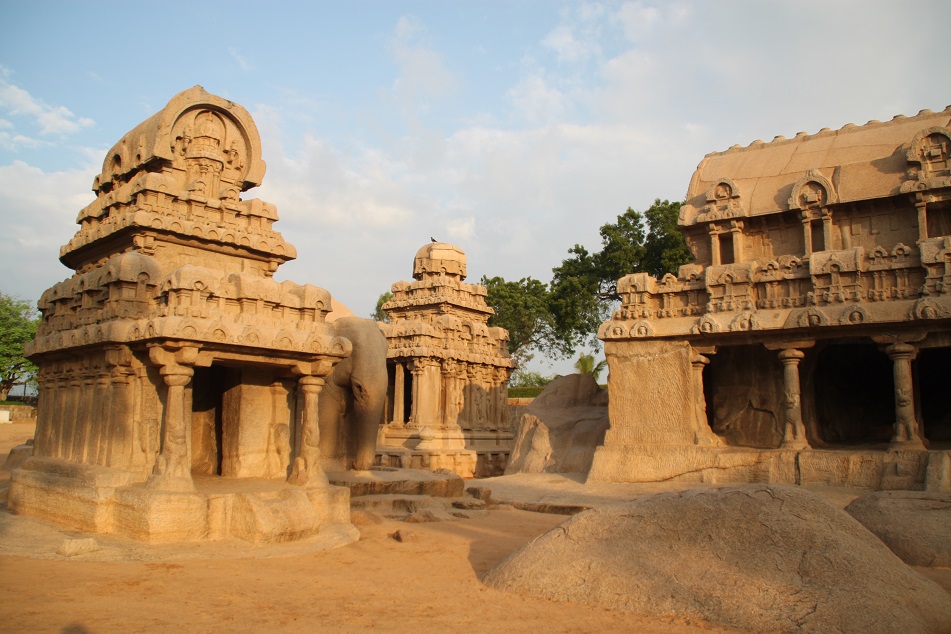
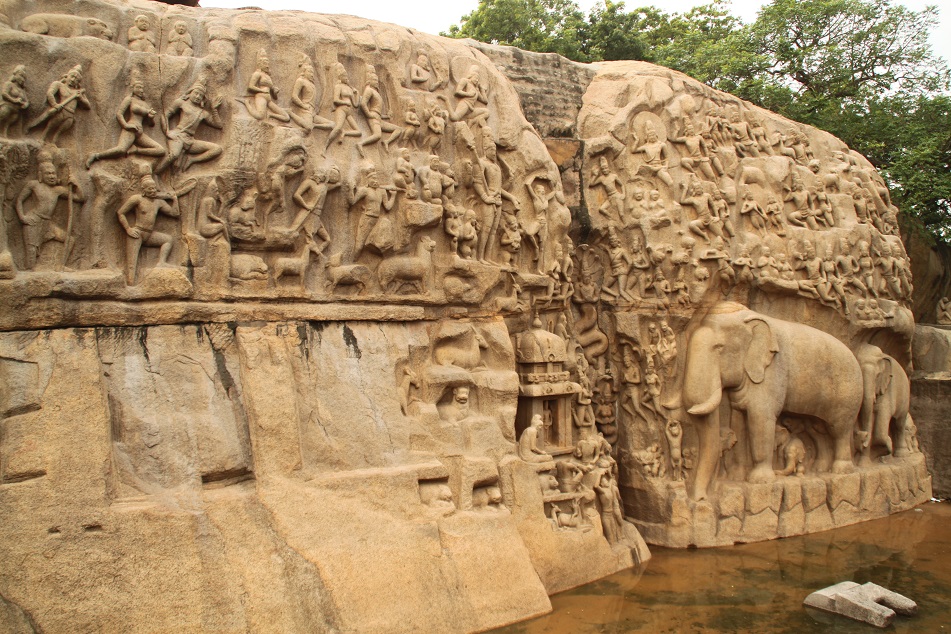


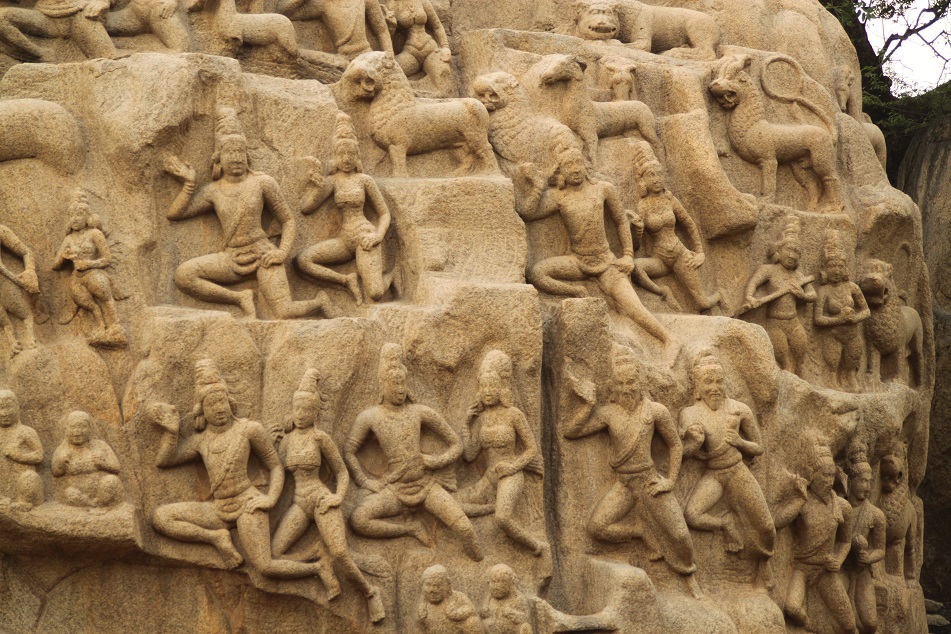

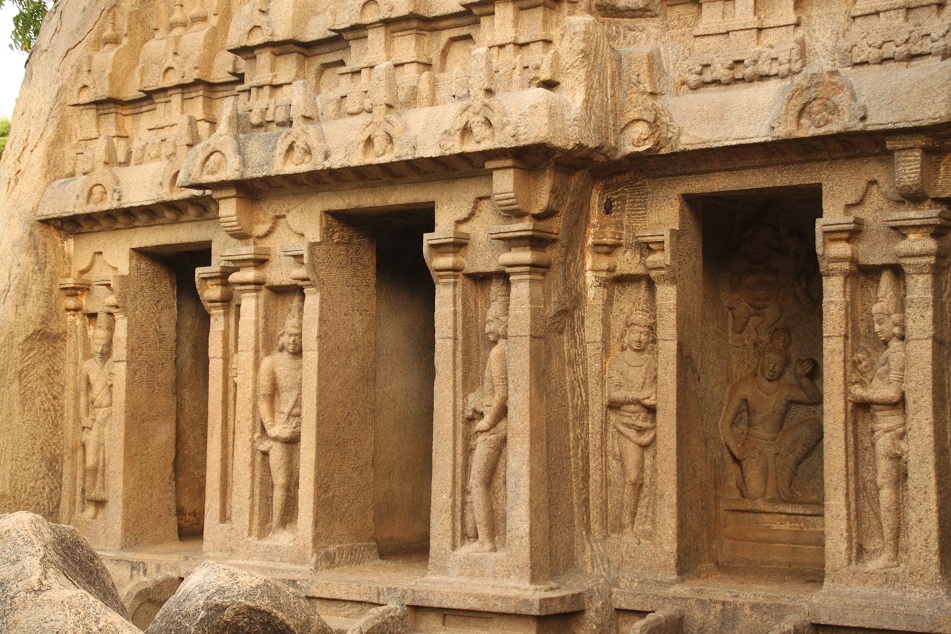
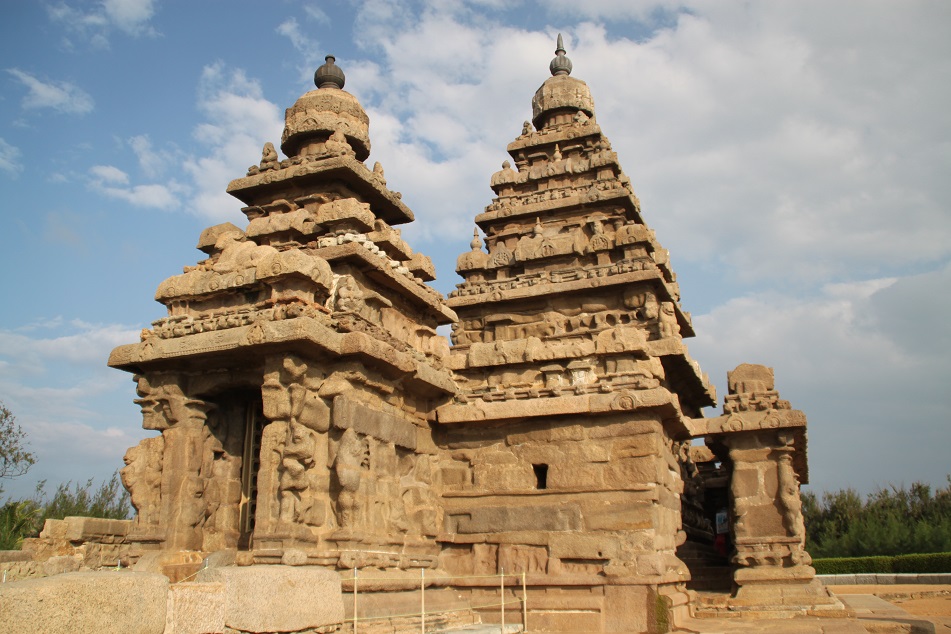

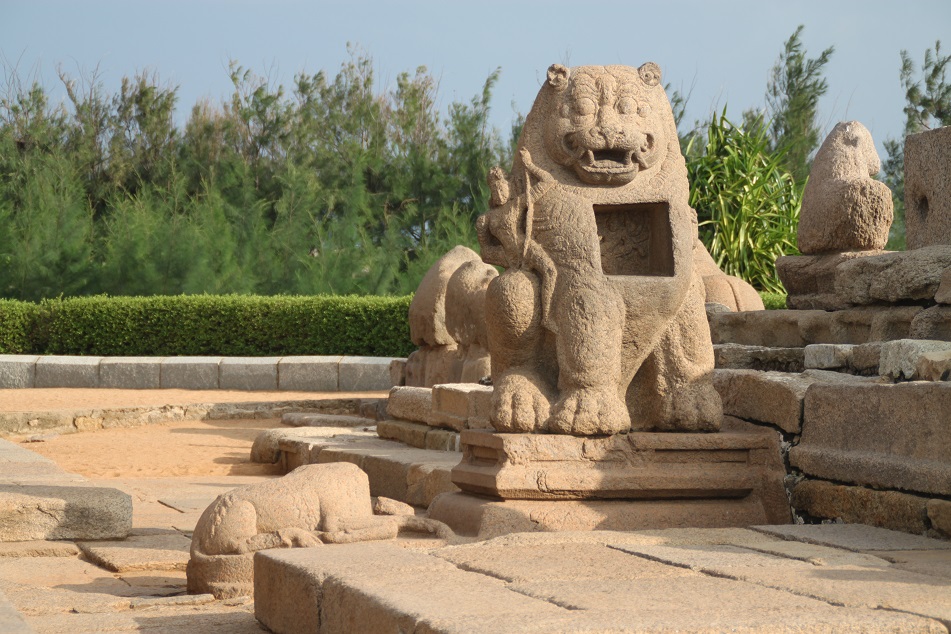
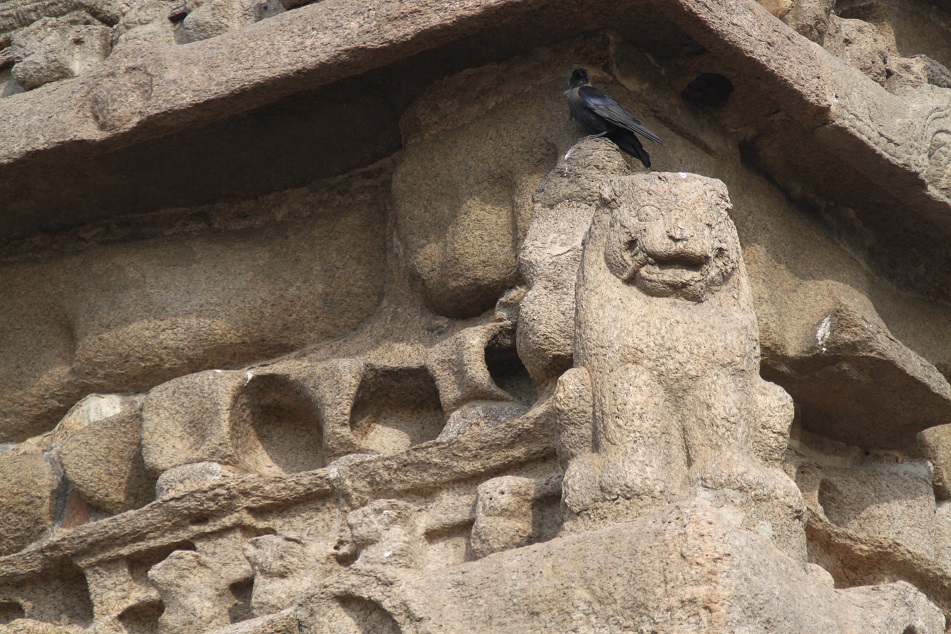
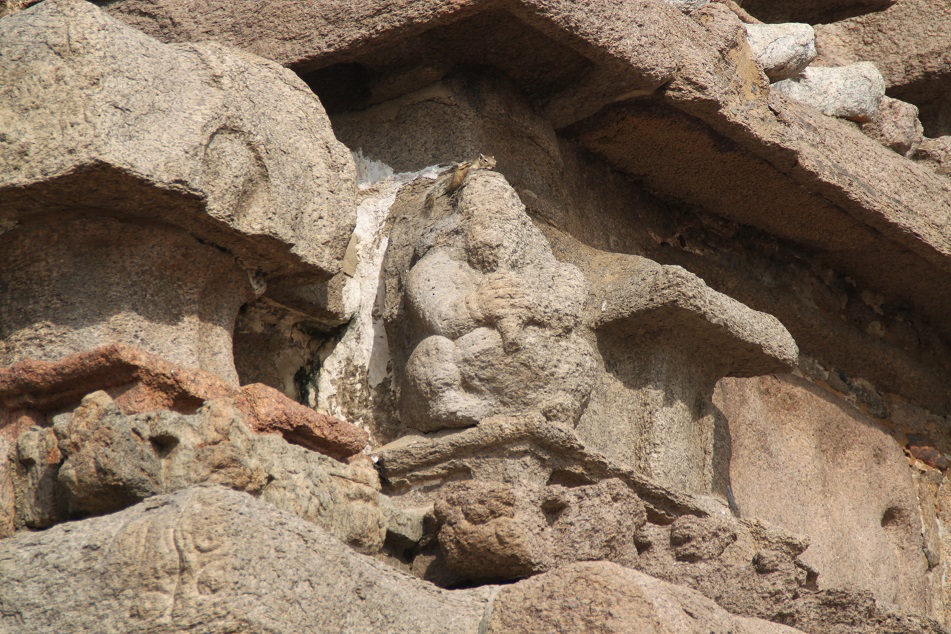
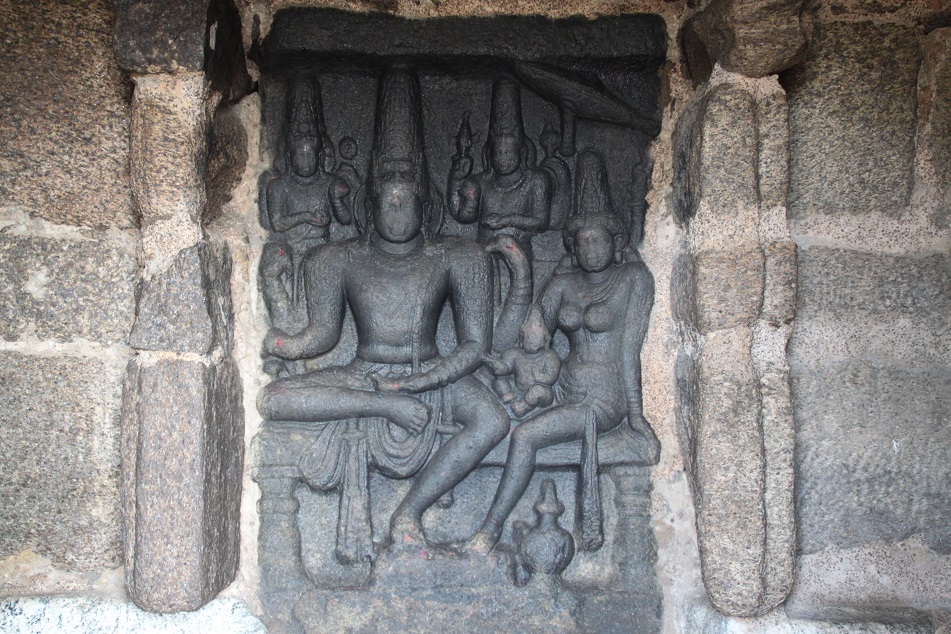
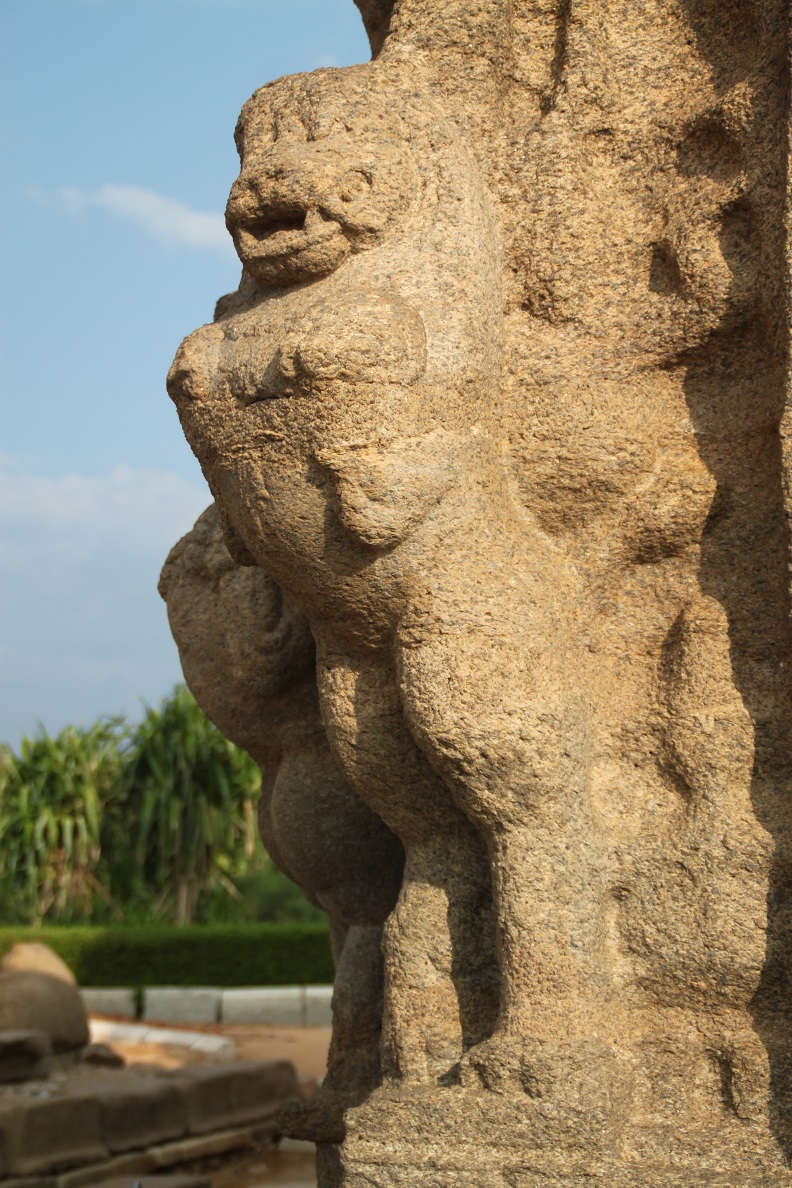

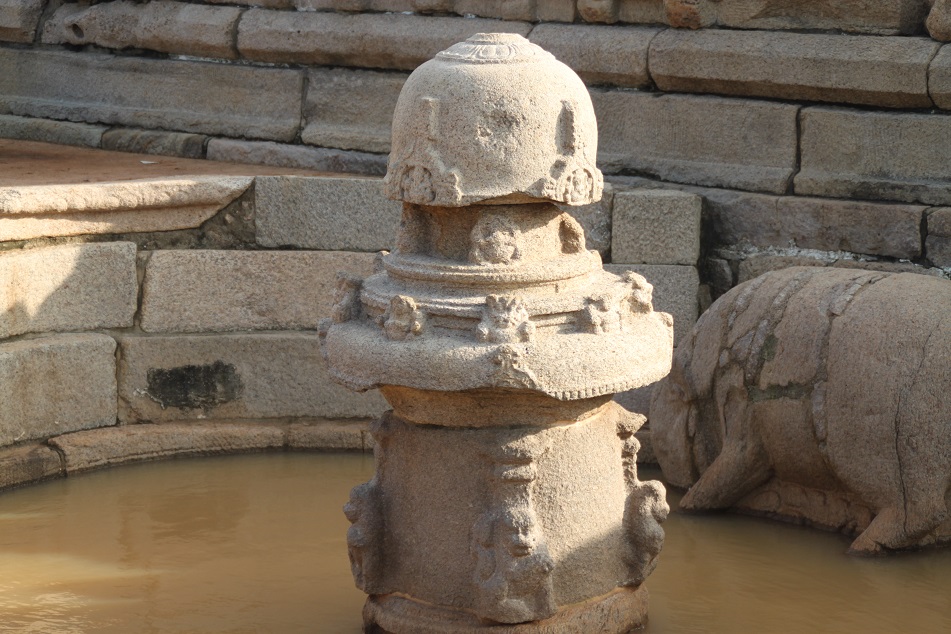
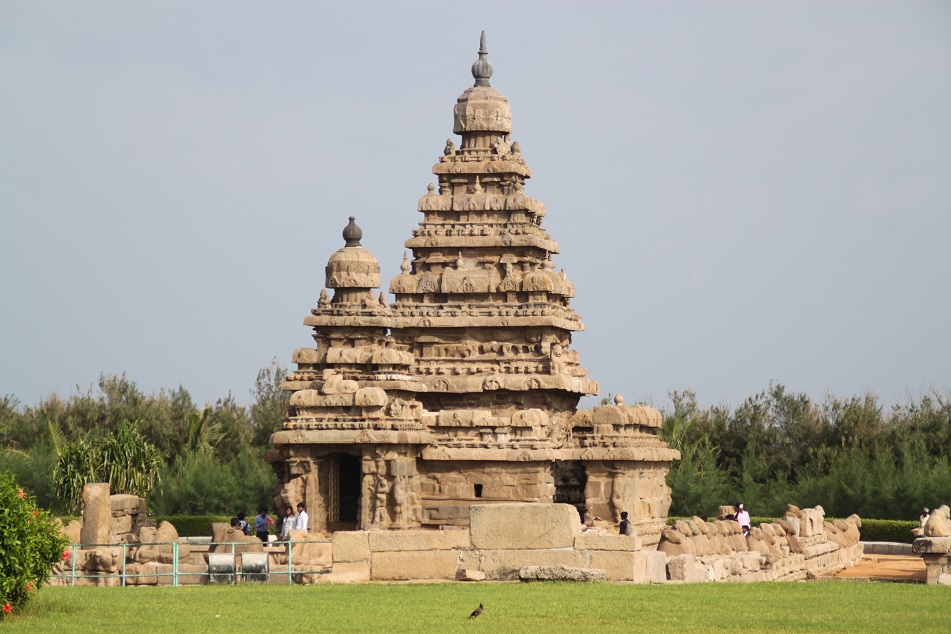
Melihat ukiran ukiran rumit dari setiap pura yang ada, semestinya ini masuk 7 keajaiban dunia… . Katanya semua pura dan relif relif itu dari batu yang dipahat sedemikian rupa….
LikeLike
Nah masalahnya 7 keajaiban dunia itu penilaiannya sangat subyektif sih. Bahkan 7 keajaiban dunia yang baru yang dikukuhkan beberapa tahun yang lalu pun pemilihannya melalui popularitas. Tapi dunia ini sungguh luas dan penuh dengan keajaiban yang gak cukup hanya dibuat daftar berisi 7 tempat. 🙂
LikeLiked by 1 person
Hahaha…. iya juga ya, tapi pertanyaannya kenapa juga ya harus terpaku pada angka 7 ?
LikeLike
Pertanyaan bagus. Di beberapa kebudayaan di dunia kan angka 7 dianggap angka keberuntungan. Mungkin ada hubungannya dengan itu, mungkin lho ya..
LikeLiked by 1 person
Bama… envy bangeeeeettt bisa ke mamallapura ato juga dikenal dg mahabalipuram ya.. the world heritage site in Tamil Nadu! Kereen banget! And Krishna’ butter ball itu hahaha gede banget ya…
Ternyata mahabalipuram itu bener2 luarbiasa yaa…
LikeLike
Saya sebenernya gak nyangka akan sebagus ini sih. Pas datang ke sana dan menjelajah baru deh kagum banget, ternyata melebihi ekspektasi saya! Untuk ukiran memang bukan yang paling rumit dan detail di India, tapi dilihat dari teknik pembuatan dan skalanya memang Mahabalipuram ini luar biasa. Ngomong-ngomong soal Krishna Butter Ball itu, pas saya ke sana ada lho satu orang yang dengan santainya tiduran persis di bawahnya. 😀
LikeLiked by 1 person
Nah, samaa dong… aku juga ga nyangka sama sekali bahwa Mahabalipuram sekeren itu. Baru nyadar pas liat photonya waaow.. apalagi dateng kesana ya? Hihihi…
Itu orang yang tiduran di bawah Krishna butter ball bener2 beriman deh, ga bakal kelindes hihihi.. 😀
LikeLike
Nah buat orang-orang kayak kita yang suka sama candi-candi pasti suka deh ke Mahabalipuram. Gak terlalu jauh dari Chennai kok, kurang lebih sekitar 1 jam perjalanan. Jadi kalau pas di sekitar Chennai disempatkan ya Mbak main ke Mahabalipuram. 🙂
Beriman banget! Percaya bahwa gak akan terjadi apa-apa, hehe..
LikeLiked by 1 person
Sejak awal aku baca artikel ini, aku langsung teringat pada arsitektur candi-candi di kompleks Dieng. Kalau dilihat-lihat strukturnya memiliki kemiripan ya? Hanya saja yang aku kagumi dari Mahabalipuram ini adalah mereka diukir langsung di atas satu batu utuh, bukan disusun perbagian seperti candi-candi di kita. Dan baru setelah itu mereka membangun dengan cara itu sejak masa Raja Narasimhavarwan II. Hmmm Bam, jangan-jangan Raja ini justru dapat ide setelah melihat/mendengar metode pembangunan candi di tanah Jawa 🙂
Aku agak serem lihat Khrisna’s Butter Ball, apalagi dengan orang-orang yang beristirahat di bawahnya. Kalau tiba-tiba menggelinding gimana coba?
O iya, kompleks Mahabalipuram ini luasnya kira-kira berapa Bam? Seluas kompleks Borobudur atau Prambanan Sewu ada gak?
LikeLike
Nah, kalo dari sumber yang aku baca sih untuk arsitektur candi-candi di Jawa memang terinspirasi dari candi-candi di India, karena sebelum adanya kontak dengan India dulu arsitektur di Jawa dan Indonesia bagian lainnya lebih ke arah punden berundak ciri khas masa megalitikum. But anyway, dari semua situs di Mahabalipuram ini aku paling kagum memang sama Pancha Ratha, karena mereka diukir dari bongkahan batu besar.
Bart, ada lho orang yang tiduran di bawah bola raksasa itu pas aku ke sana. 😀 Ngeri-ngeri takjub aku liatnya. Untuk luasnya sepertinya lebih luas dari Borobudur maupun Prambanan, karena the Shore Temple, Pancha Ratha, Arjuna’s Penance, dan mandapa-mandapanya terletak agak berjauhan satu sama lain dan kemarin aku dari satu tempat ke tempat yang lain naik mobil sih.
LikeLiked by 1 person
Noted. Dan bahasa Pancha Ratha ini juga jadi bahasa serapan di Indonesia ya. Aku jadi ingat nama salah satu kereta milik keraton Jogja. Kyai Rata Pralaya (Kereta Kematian), Rata nya pasti serapan dari Ratha juga.
Nah itu, khan bisa aja terjadi sesuatu trus batunya menggelinding. Itu batu nya sama sekali gak dikasih penahan untu safety, dan gak ada larangan untuk berada di sekitar line-of-fire nya batu itu ya?
Oooo jadi Mahabalipuram ini kompleks besar ya? Lumayan juga berarti kalau harus naik mobil ya.
LikeLike
Yoi, dan di India ada juga yang namanya Panchsheel (Pancasila), meskipun konteksnya beda dengan Pancasila kita. Aku baru tau mengenai kata ‘rata’ yang berarti kereta. Udah pasti itu serapan dari ratha sih aku rasa.
Nah, aku gak inspeksi batunya, takut nggelinding ke arahku 😀 Tapi untuk uji keberanian mungkin boleh dicoba Bart.
Sebenernya jalan kaki untuk mengelilingi situs-situs di Mahabalipuram bisa-bisa aja sih. Cuma kemarin karena udah sore, dan mumpung ada mobil, jadinya kami pilih cara nyaman, hehe..
LikeLiked by 1 person
Wah pengetahuan tambahan baru nih, Panchsheel. Isinya apa Bam? *males googling*
Hahaha emoh ah aku disuruh nyobainnya, takut pas apes 😀
Ooo iyalah mumpung kalau ada mobil. Harusnya kalau ada penyewaan sepeda lebih seru ya? Asal gak siang bolong di musim panas aja 🙂
LikeLike
Jadi itu mengenai lima prinsip dalam hubungan India dan China, semacam kesepakatan antara kedua negara.
Hmmm aku baru ngeh kayaknya aku gak liat sepeda sama sekali deh di sana. Padahal seru kalo ada.
LikeLiked by 1 person
Ooo menarik ya, sampai ada yang seperti itu segala. Secara mereka tetanggaan, dan banyak hal yang bisa jadi sumber perseteruan kalau gak diatur baik-baik.
Nah, peluang bisnis tuh Bam! Haha 😀
LikeLike
Kalau di sini kasusnya saling klaim produk budaya dan pulau-pulau kecil di perbatasan. 🙂
Ayo! Aku buka rental sepeda, kamu bukan rumah makan Padang, hehe.
LikeLiked by 1 person
Pulau bagian mana Bam? Mereka bukannya berbatasan tanah aja ya?
Onde mande buliah ikoooo 🙂
LikeLike
Maksudku ‘di sini’ itu Indonesia sama negeri jiran. 😀
Ikooo… Uwais?
LikeLiked by 1 person
😀
LikeLike
Mahabalipuram was such a gem – before setting off on our trip I knew virtually nothing about it, not to mention its wondrous temples/rathas and reliefs! I’m so glad that Madhu and Ravi could join us there for an overnight stay. And yes, after visiting all those ancient Javanese temples I could really see their stylistic similarities with the Shore Temple.
LikeLike
It really was! I was pleasantly surprised as well. You know how I was thinking of doing a day trip from Chennai, but I’m glad Madhu convinced us to stay one night in Mahabalipuram instead. Now I’m eyeing another gem of the Pallavas: Kailasanathar temple in Kanchipuram. 🙂
LikeLiked by 1 person
Hey I recently visited Mahabalipuram and it is beautiful. Funny story, I visited the Shore Temple 5 months ago and I didn’t know about the Seven Pagodas. I read 2 days ago about their fantastic story and how they were seen again after the tsunami in 2004. I wish the the Shore Temple last longer, but you can almost see how their carvings are melting, incredible what wind and erosion can do to rock right? Thanks for sharing.
LikeLike
I know, it’s wonderful, isn’t it? Speaking of the sunken temples, there’s an interesting illustration I found on the internet: http://ancientexplorers.com/wp-content/uploads/sites/6/2015/08/The_Seven_Pagodas.jpg
A few days ago I read about an ancient site in India which had been submerged in a river and was only recently discovered due to the low water level. It’s mind-boggling to realize that there must be lots of places like that in the world, hidden from plain sight for centuries.
I do wish the Shore Temple last another century (and beyond)! Thanks for reading and sharing your thoughts.
LikeLiked by 1 person
Bama when I read your posts I feel as though I have walked into a National Geographic documentary. So well researched as you walk the reader through the centuries. In a country as young as Canada I often struggle to wrap my head around the long history of such places. Your photos as always amazing. That butter ball makes me want to run and hide. 🙂
LikeLike
That’s very kind of you to say, Sue. I guess I just love history too much. 🙂 It’s exciting and at times overwhelming to learn about what happened in certain parts of the world hundreds and even thousands of years ago. Canada is indeed so young compared to India, nevertheless it’s one of the countries I want to visit the most in the western hemisphere. You know, that butter ball does remind me of the giant ball chasing Indy in Indiana Jones movie. 🙂
LikeLiked by 1 person
Oh yes I remember that from the movie!
Bama should you ever come to Canada, and I hope you will, know you would be welcome to use our home as a base. Imagine the photos you could take in our Rocky Mountains!
LikeLike
Wow, thank you so much, Sue. Maybe I really should start planning a trip to Canada and see the Rockies myself!
LikeLiked by 1 person
Yes you should! We’ll be waiting to welcome you.
LikeLiked by 1 person
What really blows me away here is the SCALE of everything! Nice to see a few humans in there to really appreciate juts how large some of this is. Wow.
LikeLike
Exactly! There are more rock-cut temples in the area, but we didn’t have enough time to visit them since it was already late in the afternoon. However even from the photos of the sites we visited you can sense the scale of Mahabalipuram.
LikeLiked by 1 person
It is truly amazing to learn about the method in splitting the giant boulders using only wood & water!
LikeLike
Ancient people always amaze us with their ingenuity!
LikeLiked by 1 person
Bama, you should write a book about your travel! This is really fascinating!
LikeLike
Many people tell me to do the same. I guess I really should seriously consider doing just that. Thank you for the encouragement!
LikeLike
Pingback: Dieng: Dawn of Javanese Hindu Temples | What an Amazing World!
Pingback: Dieng: Dawn of Javanese Hindu Temples | What an Amazing World!
I second Indah’s comment. Your posts are beautiful visual presentations
LikeLike
Thanks for your encouragement, Sreejith. That’s very kind of both of you. I would love to, but first I shall see what kind of perspective I should use.
LikeLike
Who would knew that this ancient historical town was a bustling sea trading port city at the height of the Pallavas Dynasty. Such an Engineering Marvel the fact that granite stones are so hard to carved but they managed to build them in different sanctuaries of rathas, mandapas, rock reliefs, and the famous Shore Temple or what the seafarers and traders back then called as Seven Pagodas the only structural temple that stood at our present time right now.
LikeLike
Exploring such ancient sites is always a humbling experience for me. It is amazing to realize how far the people who lived long before us had achieved in terms of artistry and craftsmanship. Thanks for your comment, Marydane.
LikeLike
Nice pictures of a nice place. Good work.
LikeLike
Thank you, Pandian.
LikeLike
Bama, what an amazing and well researched post! It was a pleasure to play tourist in Mahabalipuram with you guys. I am yet to process all of the photos I took that day! And now I have the Tanjavur temples to contend with
LikeLike
Thank you, Madhu, but without you we wouldn’t have gone to Mahabalipuram at all, I believe. So, thanks again for everything! I would love to read your story from Thanjavur and Darasuram — your photo of Airavateshwar Temple is amazing!
LikeLike
Pingback: The Cholas: Conquerors from Southern India | What an Amazing World!
Ah! I was last year and the place is magical. Loved the pictures! Your post does justice to the place 🙂
LikeLike
I’m really glad that we just had enough time to visit Mahabalipuram. The afternoon sun somehow created this melancholic ambiance in the ancient town. Thanks!
LikeLike
Pingback: Vijayanagara: the Golden Period | What an Amazing World!
Pingback: Chennai: An Enduring Charm | What an Amazing World!
Pingback: Candi Badut: A Remnant of Kanjuruhan | What an Amazing World!